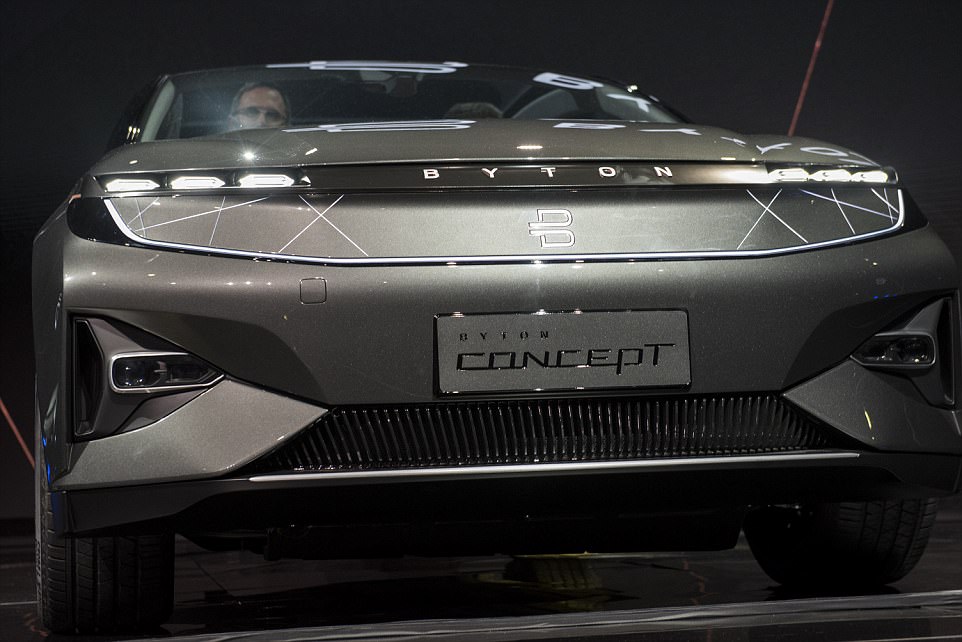Byton has revealed the first look at the high-tech electric car it claims will ‘perceive more than what a human being will ever do.’
The firm finally unveiled its first drivable prototype at the Consumer Electronics Show in Las Vegas today, after teasing the so-called Smart Intuitive Vehicle (SIV) since September.
The Nanjing-based company plans to roll out the mid-sized crossover vehicle with level 3 autonomy in China in 2019, starting at $45,000, before hitting the US and Europe in 2020.
The base model will be able to achieve 250 miles on a charge, while the higher end variant will go up to about 325 miles – and, the firm claims it will charge incredibly fast.
Byton claims it is on the verge of achieving a fast-charging system that will ‘get enough charge for a whole week of urban commuting’ in just the amount of time it takes you to have a cup of coffee.
Onstage at CES, co-founder Dr Carson Breitfeld said the car will recharge to a range of 150 miles (249 kilometers) in just 20 minutes.
And, in just 30 minutes, the battery will be 80 percent full.
Its cars are designed to be ‘the next generation of smart devices for shared mobility and autonomous driving.’
As a result, much of the focus has been put into its smart human-vehicle interface.
The car is essentially a ‘smartphone on wheels,’ a Byton test driver said during the Las Vegas event.
It will be equipped with gesture recognition, facial recognition, and even emotion recognition, to differentiate between the driver and passenger and personalize the rider experience.
Safety is the ‘underlying principle,’ of the design, Breitfeld explained.
The car will respond to conditions on the road to avoid potential threats; for example, ‘if the exterior lighting conditions change, your Byton will adjust to your needs automatically,’ the co-founder said.
It also has a touch screen built right onto the steering wheel, in what the firm claims is a world first.
This means ‘the driver can always interact with the vehicle in the direct line of vision.’
It also has voice control with Amazon’s Alexa, and an intuitive gesture control system that responds to 5 different hand commands.
The car is designed to be smart and sleek, with invisible door handles and flat antennas integrated into the roof, eschewing the ‘shark fins’ common in current vehicles.
It will also feature an array of cameras instead of side view mirrors.
The interior aims to provide a ‘digital lounge experience,’ explained Dr Breitfeld.
‘Once you have taken your seat, you will feel as if you’re in a luxurious living room.’
















